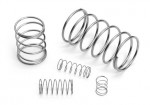Manual tube bender and spring back
Published: 03 January, 2017
This article is based on guidance provided in the British Fluid Power Association’s training course titled ‘Small Bore Tubing Integrity Course – using twin ferrule compression fittings’. Following on from our look at tube preparation in our November edition, this month, we look at tube bending principles.
Manual tube bender and spring back
One of the advantages of using tubing instead of pipe is that tubing can be bent to any angle for installation purposes, reducing the need for additional fittings.
Main parts of a tube bender
Spring back
There is a rule of thumb that needs to be considered when producing bends on tubing, which is that it will spring back. For example, stainless steel spring back is approximately 3 degrees for every 90 degrees of bend produced.
Therefore, it is good practice to test a piece of the tubing to establish how much spring back occurs.
It is always better to under-bend a tube slightly, as this will allow for additional bending if required to achieve the correct angle.
Remember, tube benders are not designed for unbending tube.
More information
The above information has been edited from course booklet for the British Fluid Power Association’s new training course titled ‘Small Bore Tubing Integrity Course – using twin ferrule compression fittings’. For more information about the new course and how you or your staff can enrol, please contact the Association at: info@bfpatrainingacademy.co.uk. For general enquiries, please contact: enquiries@bfpa.co.uk, or Tel: 01608 647900.





 LEE SPRING says its stand at Southern Manufacturing (Stand J104) will show a selection of springs and fasteners that are typically specified for the manufacturing and electronics industries.
LEE SPRING says its stand at Southern Manufacturing (Stand J104) will show a selection of springs and fasteners that are typically specified for the manufacturing and electronics industries.
